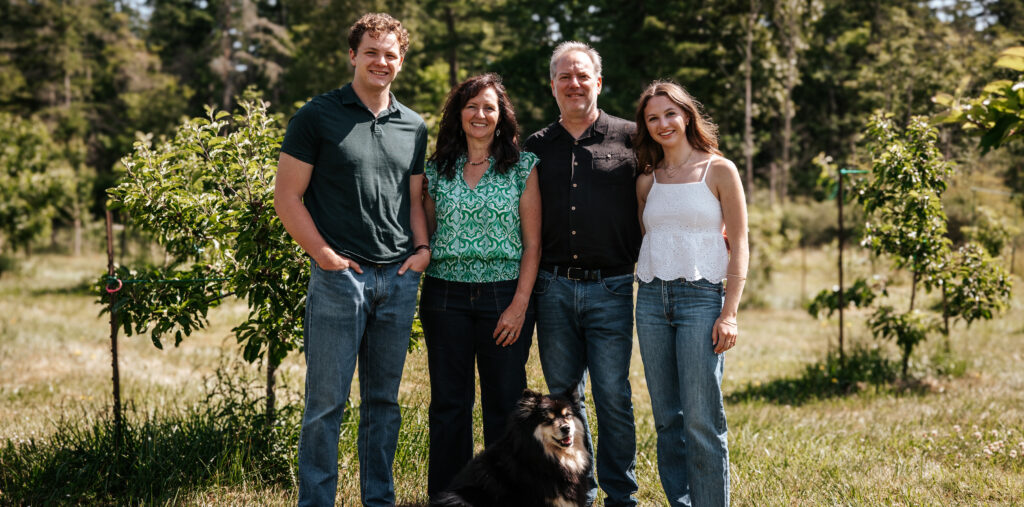– by Gillian Crowley –
After talking with Solara Goldwynn of Hatchet and Seed Edible Landscaping, I’m going to take a critical second look at my modest vegetable garden and large swath of lawn. Solara and her partner, Tayler Krawczyk, are strong proponents of permaculture, a design method that integrates patterns and strategies found in nature to guide the development of resilient human-scale systems.
The term “Permaculture” suggests both “permanent agriculture” and societal “culture.” Its applications and ethics are a natural fit for those who want to “act locally but think globally.” The idea was developed in the 1970’s by two Aussies, Bill Mollison and David Holmgren, who proposed a way to live more lightly on the land. Their 12 principles guide the design work that Tayler and Solara carry out today to help their clients create edible landscapes using applied permaculture.
Permaculture principles can be used on a farm, small acreage, community plot or a balcony container garden. The first principle, “observe and interact,” encourages close attention to sun, shade, seasonal cycles, weather, nature of the soil, water flow and other elements that interact and affect a site. Hatchet and Seed helps clients identify zones within their property and then designs soil development techniques and edible plantings best suited for each area. The goal is to create a harmonized and energy efficient layout.
Solara says that they are always experimenting at Wild Edge Garden Farm in North Saanich shared with mentor Heather Goulet. Just past the chicken coop where a dozen hens are happily scratching in the straw is a new Hugelkultur garden. “The way it works is similar to nurse logs in the forest,” Solara explains. Raised beds are created by piling rotted wood in a shallow pit and then covering it with soil and compost. Over time the wood decays, releasing nutrients for the plants above and retaining moisture during the dry summer. Pathways made of woodchips serve as water sponges too.
Other vegetable beds have been created using the no-dig “lasagna” method which appeals to the lazy gardener in me. A thick layer of newspapers or cardboard is placed directly over the weeds, then alternating layers of brown compost (dry leaves, peat moss) and green compost (grass clippings, vegetable waste) are added. In no time a rich, fluffy soil develops. This technique replicates the natural soil building that takes place with vegetative layering over the seasons.
“Permaculture essentially means looking for patterns in nature and then adapting these techniques. Everything is site-specific,” Solara says. She recently applied permaculture design concepts to develop a community kitchen garden in Fernwood, part of a pilot project with the City of Victoria. The Fernwood Community Centre transformed its 1,800-square-foot decorative garden beds into edible food gardens that will be managed by a neighbourhood group.
As Islanders become increasingly aware of the health value of fresh local produce and the need to be more self-sufficient, permaculture may become more mainstream. “We teach people how they can be more resilient,” says Solara. This means growing more nutrient-dense foods, planting more fruit and nut trees and relying less on water-gobbling annuals and more on deep-rooted perennials. Philosophically, Solara says: “Permaculture is about trying things in a more ethical way and caring more about our place in the world.”
Hatchet & Seed will be holding a workshop on “Permaculture Systems in Action” April 12th through 13th. For further details visit www.hatchetnseed.ca.




